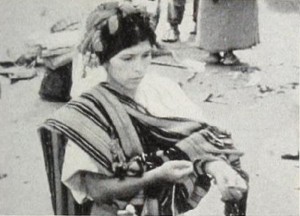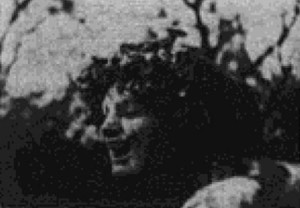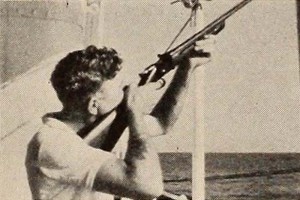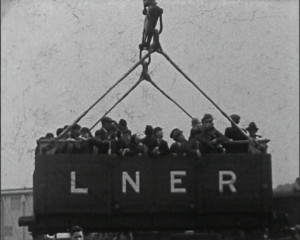documentary chronicle

"Living Mayas of Guatemala is a detailed study of human ways which explains enough, as it goes along, to give those who see it a feeling of intimacy with the strange customs that are recorded. There have been special film studies of the descendents of the great Central Americans of the past, and these have singled out some particular phase of Mayan life. Giles G. Healey has set himself a larger task, in interpreting the unity of the modern Mayas by following them through each day of a week. We see them at home, at work, at play and engaged with singular devotion in religious observances. These major sequences of the various days are full, and, for the most part, adequately filmed. Action is not posed, and the audience shares with the cameraman the feeling of observing something so vital as to make the filmer's presence entirely incidental. The final portion of Mr. Healey's movie offers a fine record of the special religious ceremony at Chichicastenango. A deficiency of illumination, although a cinematographic detraction, does not destroy the illusion of participation in the communal devotions. Here is an important contribution to the study of folkways, done attentively, intelligently and interestingly." Movie Makers, Dec. 1942, 508.

"The Living is an experimental film in which Dan Wolman has used many of the principles of the cinema to great advantage. With static shots of statues to begin, the viewer wonders what can possibly be done with this subject. But suddenly, the statues come alive, helped along with music and Wolman's roving camera. His imagination was enough also to win for him the MPD Golden Scissors Award for the best film editing, as well as the MPD Sound Award for the best use of sound" PSA Journal, Aug. 1967, 36.
"Local events in Preston - the Mayor's procession; Christmas shopping; pot fair; Royal Infirmary rag; egg rolling in Avenham Park; dog show; and a horse fair" (NWFA Online Database).

"Frances Christeson, experienced cinematographer and artist of cine devices, gives us in Log of the Timber Rush the movie diary of a holiday voyage. That the freighter, in which she had booked passage, stripped its gears and was stalled somewhere in the Pacific Ocean, well off the coast of Mexico, upset her film plan but did not stop her. It became part of an amazing personal and movie making experience. But before the misfortune at sea and the long delay of weeks, waiting for help and repairs. Miss Christeson had filmed the loading of the Timber Rush with affectionate attention to detail and the use of fascinating cine symbols. She also had captured sequences of gorgeous quality, framed through ship's gear and depicting the beautiful, lazy clouds of the tropics and the life aboard the vessel. When the gears were stripped and the long period of inaction came, the camerawoman had, as she puts it, "the job of filming nothing happening." She does that as well as possible, and the result is a delightful sea picture marred only by the doldrums of fate." Movie Makers, Dec. 1938, 619.

"Three sequences of street scenes shot in Westminster during the 1930s. The exact date of the film is not known" (EAFA Database).

"A variety of steam engines and carriages are seen around the yard at Thorpe Station, as well as dignitaries making speeches at the exhibition's opening" (EAFA Database).
"In London Terrace, a picture made to advertise an apartment house, T. W. Willard, ACL, has shown quite clearly that interesting and attractive scenes and well planned action can combine to make a most effective sales argument. The interiors were even better handled than in Mr. Willard's Honorable Mention winner for 1934. The film has an air of complete confidence in presentation that was largely because of effective planning and direction, items very often slighted in the production of commercial pictures. The film succeeds in entertaining an audience and holding its attention consistently, in spite of a continuous sales message. Excellent, straightforward photography of many rather difficult sets was featured throughout the entire reel. The picture shows clearly how well 16mm. can be used for industrial work." Movie Makers, Dec. 1935, 550.
"An intertitled travelogue film of a trip to Australia starts with a map showing the journey from London to Australia, followed by views at different stages of the route" (SASE online).
Total Pages: 299